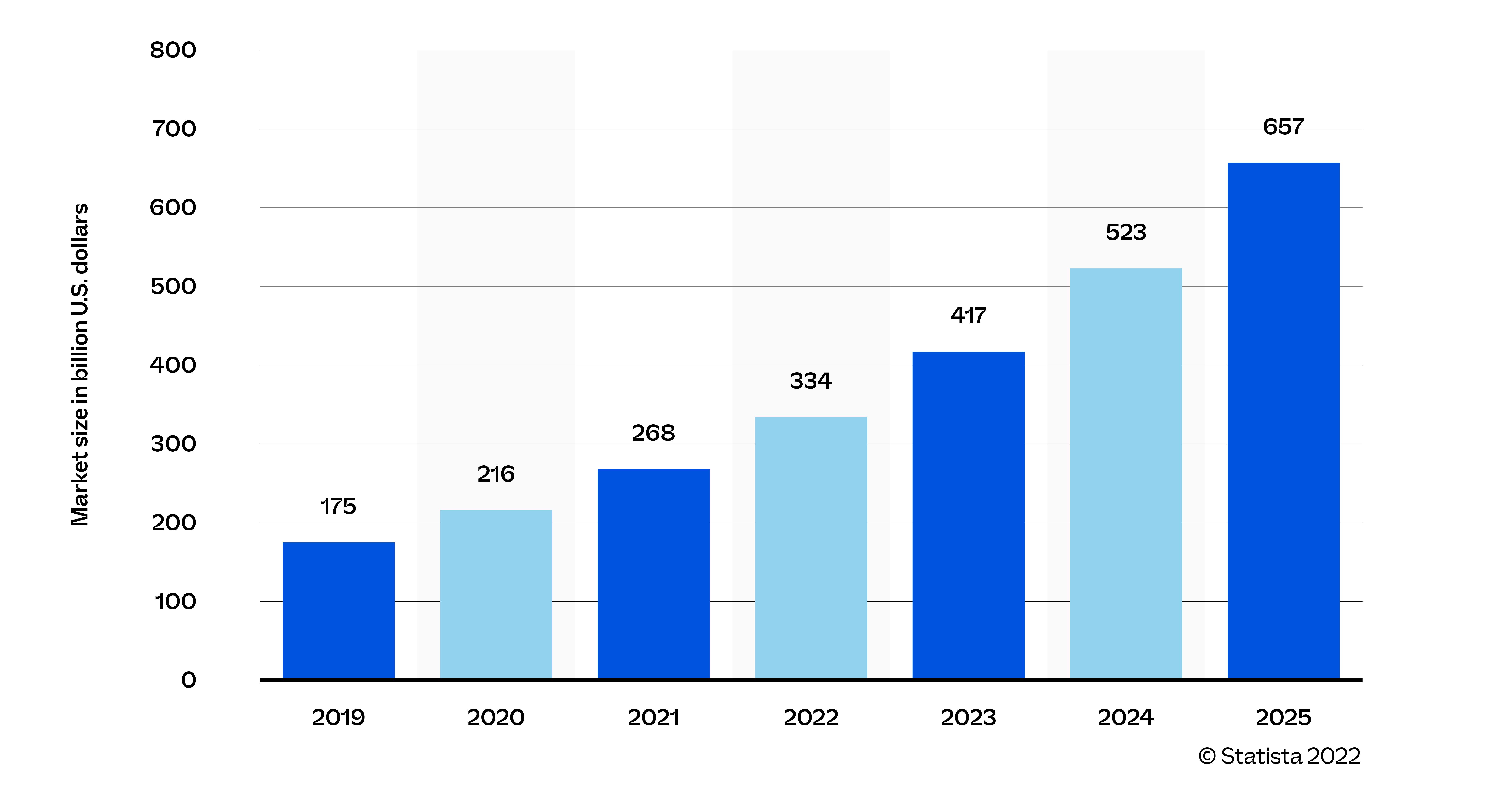The HealthTech Brand Check: Part 1
Part 1: The dynamics shaping the future of healthcare businesses. The Coronavirus pandemic has, through necessity, only accelerated the pace of digitalisation in the healthcare industry. The scale of this opportunity, combined with rapid technological advances and fast-changing expectations among consumers, patients and doctors, means that competition will be fierce. HealthTech businesses will need a powerful, differentiated proposition, a strong brand, and an exceptionally good user experience if they are to succeed.
Apr 2022
Share article
Share Article

The Coronavirus pandemic has, through necessity, only accelerated the pace of digitalisation in the healthcare industry. The scale of this opportunity, combined with rapid technological advances and fast-changing expectations among consumers, patients and doctors, means that competition will be fierce.
HealthTech businesses will need a powerful, differentiated proposition, a strong brand, and an exceptionally good user experience if they are to succeed.
At Re, our own analysis of the HealthTech market has revealed ten key characteristics of successful businesses and brands operating in this space.
In this three-part series, we are providing:
1. Five dynamics that are shaping HealthTech business models and propositions.
2. Five elements exploring the evolution of brand expression and experience in healthcare, driven by HealthTech brands.
3. A way forward for creating and scaling a healthcare brand that’s fit to compete in the HealthTech landscape.
In keeping with HealthTech, Parts I & II are a business and brand diagnostic. Part III will put your HealthTech brand on a path to optimum fitness.

The five things to consider for HealthTech business models and propositions are:
1. Digitalisation
2. Quality of information
3. Interoperability
4. Sustainability
5. Data Ethics
Not every business will want to maximise all five. But we think it would be a mistake for any HealthTech business not to consider each one carefully.
Digitalisation
Enabling people to monitor their own vital statistics continuously delivers greater convenience and allows people to actively manage health conditions or to identify and address small issues before they become major medical problems.
HealthTech is an important element of the larger ‘Quantified Self’ movement. The digital integration of consumer devices with mobile apps and telemedicine is central to HealthTech.
The success of HealthTech brands depends on the degree to which they successfully integrate hardware, apps, data and services into seamless, simple and connected user experiences.
Take Withings, for example. Their range of devices include smart watches, blood pressure monitors, smart scales, sleep monitors and thermometers.
These connect over WiFi to share and combine their readings in the Withings App, which in turn can share information with Google Fit or Apple Health. Health advice is provided by the app and information can be easily shared with healthcare practitioners.
Platformisation is transforming elements of traditional healthcare too. Services like Livi (digital GP) and Mindler (online psychology) offer online consultations via live video call. Practitioners are able to work from home, extending the hours in which they are available. Patients are able to get appointments at times that suit them without having to travel. It’s more convenient for everybody.
Quality of information
Accuracy, and clarity, of advice and information is paramount to creating a HealthTech brand that will stand the test of time. In an era of health fads and medical disinformation, quality is an advantage for your business because it is an advantage to your customer.
With health issues as diverse as nutrition and vaccination becoming mixed up in online culture wars or simply shameless grifting, building a business on evidence-led, authoritative information is more important than ever.
Glooko is a great example of doing things well. They offer personalized remote patient monitoring for diabetes. Working in partnership with Novo Nordisk and IBM Watson, patients benefit from a state-of-the-art digital platform combined with deep expertise in diabetes. This is an advantage for patients and their doctors, but the information gleaned at a population level about the condition will further improve clinical approaches to diabetes management.
Interoperability
Consumers rightly expect their devices and apps to work together. They will have their own preferences for which devices most appeal to them and which are best suited to managing their individual health care needs.
At Re, we believe that a ‘walled garden’ approach is bad for brands and bad for consumers. The vision of effective HealthTech should include a holistic perspective on people’s health over time. No single provider will be able to excel at every aspect of health, and people’s own individual priorities will drive how they put together their own personal HealthTech stack.
Interoperability is a critical success factor for HealthTech brands. That goes for a company’s own portfolio and brand architecture, and more broadly for the degree of interconnectedness and compatibility between diverse offers in the marketplace. A Bluetooth-enabled oximeter with its own app has some limited appeal, but one that can offer its readings to apps with a broader health remit or connect through to Google Fit or Apple Health is exponentially more valuable to consumers.
As the HealthTech field expands beyond a narrow definition of medicine or fitness to encompass sleep tracking, holistic nutrition, genomics, wellbeing and sexual wellness, the challenges in delivering integrated interoperability and meaningful information become more profound. Addressing this level of complexity with a simple and accessible approach will greatly help consumers.
Sustainability
Improved patient care can’t come at a cost to society and the environment. HealthTech companies have a lot to offer in terms of delivering The United Nations 17 Sustainable Development goals by ‘ensuring healthy lives and promoting well-being for all at all ages’. That’s actually Goal No 3, and it’s obvious how HealthTech brands might contribute, although there’s work to be done in making HealthTech accessible for ‘all at all ages’ in terms of inclusivity, accessibility, affordability and simplicity.
Improving the lives and health of the general population is a bigger win for sustainability than trying to help a few tech bros live forever. Sustainable development will mean addressing some of the racial and gender biases that are already built-in to the AI models that inform HealthTech recommendations. Already, brands like Organon are working to redress marginalisation of women or the downplaying of issues that primarily affect women.
As technology-intensive businesses, HealthTech brands have a duty to demonstrate that their devices and data-centres are environmentally responsible.
Data ethics
People’s health data and medical records are about as personal as data can get. HealthTech brands must be completely above board with data ethics policies and practices that are rigorously trustworthy when it comes to privacy.
Consumers can only trust brands when they feel confident that their data will be handled safely and that their privacy will be in safe hands when using your platform. You must ensure that your brand collects and handles health data in the most sensitive manner and understand its impact on society. Your business should also demonstrate that at all times, it has the consumer’s well-being and safety at the heart of its operations. If software components or other partner applications are going to process or access your customers’ data, you will have to consider data ethics across the entire supply chain and ecosystem.
One of the great promises of HealthTech is the potential to collect data so it can be analysed and cross-referenced at a population level. This has the potential to lead to solutions that could benefit the whole of humanity, but poor implementation or a breach in the implied social contract between consumers and providers can undermine this entirely. In the UK a government project to share and combine NHS data was placed on hold because of concerns over commercial exploitation and inadequate anonymisation. Owners of HealthTech businesses have to do better than this.
Does your HealthTech brand need a connected story? Speak to us at Re.
At Re, we are under the guidance of a clear and powerful principle - design to connect - which permeates every aspect of what we do as a business. We help our clients develop a story they can tell, tools they can use, and experiences that engage people in their world. We believe that successful HealthTech brands have strong connections with culture, colleagues and customers and so at Re, we work with startups, scale ups and shake ups in the health space to define where to build these connections, and how.
If you’d like to find out more about Parts II and III, as well as Re, our experience and how we can help build your brand please contact hello.london@re.agency.
Stay updated